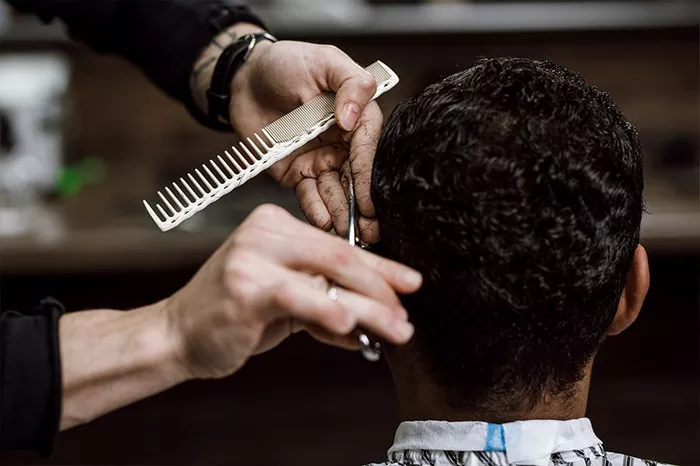Afro hair is unique in its texture, density, and curl pattern, making it one of the most versatile yet delicate hair types to care for. Its beauty lies in its volume and shape, but to maintain its health, moisture, and structure, it requires a customized routine that addresses its specific needs. If you’re looking to treat Afro hair at home effectively, this comprehensive guide will walk you through everything from moisturizing techniques to protective styling and essential Hair Care Tips.
Understanding Afro Hair
Before diving into the treatment steps, it’s important to understand the characteristics of Afro-textured hair. Typically, Afro hair has a tight curl pattern, ranging from coils to kinks. The strands tend to be more fragile, which makes them prone to dryness, tangles, and breakage if not handled properly. Additionally, the natural oils produced by the scalp have a harder time traveling down the hair shaft due to the curls, which contributes to its dryness.
Common Challenges with Afro Hair
– Dryness and lack of moisture
– Breakage and split ends
– Shrinkage
– Tangling and knotting
– Difficulty in retaining length
Essential Products for Afro Hair
Having the right products is the foundation of a healthy hair care routine. Here are the essentials every person with Afro hair should have:
Sulfate-Free Shampoo
Afro hair doesn’t require frequent washing, but when you do, using a gentle, sulfate-free shampoo helps cleanse the scalp without stripping its natural oils.
Moisturizing Conditioner
Deep conditioning is non-negotiable for Afro hair. A rich, hydrating conditioner helps soften the curls and provides necessary slip to detangle without damage.
Leave-in Conditioner
Leave-in products provide continuous moisture and protection throughout the day. They are especially important for defining curls and managing frizz.
Natural Oils and Butters
Oils like coconut, olive, jojoba, and castor oil help seal in moisture. Shea butter and mango butter also work well for locking in hydration and providing shine.
How to Treat Afro Hair at Home: A Complete Guide
Caring for Afro hair at home doesn’t have to be overwhelming. Here’s a structured approach broken into actionable hair care steps:
Step 1: Pre-poo Treatment
A pre-poo (pre-shampoo) treatment helps protect the hair from drying out during washing. Use a mix of oils or a commercial pre-poo product, apply it to dry hair, and leave it in for at least 30 minutes before shampooing.
Step 2: Gentle Cleansing
Wash your hair using lukewarm water and a sulfate-free shampoo. Massage your scalp gently with your fingertips to stimulate blood flow and remove buildup. Avoid piling hair on top of your head during washing to prevent tangling.
Step 3: Deep Conditioning
Apply a rich, moisturizing deep conditioner from roots to tips, focusing especially on the ends. Cover with a plastic cap and sit under a hooded dryer or wrap a warm towel around your head for at least 30 minutes. Rinse thoroughly.
Step 4: Detangling
Use a wide-tooth comb or your fingers to detangle hair while it is still wet and conditioned. Start at the tips and work your way up to the roots to minimize breakage.
Step 5: Moisturize and Seal
Apply a water-based leave-in conditioner, followed by a cream or butter to lock in moisture. Finish with a natural oil to seal the cuticle and prevent moisture loss.
Step 6: Protective Styling
Styles like braids, twists, Bantu knots, and cornrows help reduce manipulation and protect the hair from environmental stress. Be sure to avoid styles that pull too tightly on the edges, as this can lead to traction alopecia.
Step 7: Night Care
Always protect your hair at night by wrapping it in a satin or silk scarf or sleeping on a satin pillowcase. This reduces friction and helps retain moisture.
Weekly and Monthly Maintenance
Weekly Care Routine
– Wash and deep condition once a week
– Moisturize and seal every 2–3 days depending on hair’s needs
– Refresh protective styles if needed
Monthly Care Routine
– Trim ends every 8–12 weeks to prevent split ends
– Clarify scalp with an apple cider vinegar rinse if buildup occurs
– Protein treatments once a month to strengthen the hair
DIY Hair Masks for Afro Hair
Avocado and Honey Mask
Mash one ripe avocado, mix it with two tablespoons of honey and one tablespoon of olive oil. Apply to hair, cover with a cap, and leave for 30–45 minutes before rinsing.
Banana and Yogurt Mask
Blend one banana with half a cup of plain yogurt and a tablespoon of coconut oil. Apply generously and rinse after 20–30 minutes for soft, nourished curls.
Common Mistakes to Avoid
– Over-washing: Strips natural oils and causes dryness
– Using heat too often: Leads to heat damage and curl pattern loss
– Skipping trims: Causes split ends and hinders length retention
– Detangling dry hair: Results in unnecessary breakage
– Using the wrong products: Always check for alcohol, sulfates, and harsh chemicals
Professional Help vs. At-Home Care
While you can maintain healthy Afro hair at home, it’s beneficial to consult a professional stylist occasionally for trims, consultations, and specialized treatments. However, with the right knowledge and consistency, treating Afro hair at home can yield salon-quality results.
Conclusion
Caring for Afro hair at home is a rewarding process that allows you to understand and embrace your natural texture. With the right products, techniques, and a solid routine, your hair can thrive and reflect its full beauty. Incorporating consistent moisturizing, protective styling, and gentle handling into your regimen can make a world of difference. For more in-depth Hair Health Advice, be sure to explore trusted resources to keep your hair vibrant and strong.
Related topics:
- How to Do GK Keratin Treatment at Home: A Complete Guide
- How to Colour Your Hair with Henna Naturally at Home
- How to Get Rid of Frizzy Hair Permanently at Home


